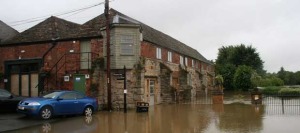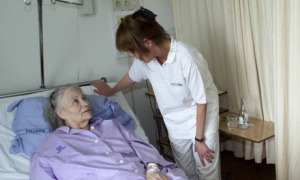WP 6 Institutional resilience
The overarching question of WP6 is: Can the societal resilience of the Nordic countries be improved through changes in legal and regulatory frameworks and enhanced institutional cooperation? Natural hazard management involves both (technical) infrastructure, as dealt with in WP5, and institutional frameworks, which are considered in WP6. These elements are supposed to enable individuals and communities to respond effectively both in proactive and in reactive terms. As regards institutional frameworks the enabling entails four areas of action: (1) promotion of social learning, (2) effective incentive structures regarding prevention, (3) adequate, timely and equitable access to relevant information, and (4) facilitation of local/regional/multi-lateral (bottom-up) organisations aimed at improving resilience and reducing vulnerability towards natural hazards.
WP6 aims to review the current state of institutional framework for natural hazards in Nordic countries and to identify options for knowledge transfer and improvement. Considering that the Nordic welfare system has such a good reputation and is regarded as a cornerstone to societal resilience in general, a specific sub-package (WP6b) will be dedicated to the role of the welfare system in natural hazard management. The sustainability of public finance will be taken into consideration in both the WP tasks.
Task 6.1 Review and enhancement of the institutional framework for natural hazard management
Team: FMI: Adriaan Perrels (WP leader) , Atte Harjanne, Karoliina Pilli-Sihvola, Väinö Nurmi; IMO: Emmanuel Pagneux; NCIP: Einar Pétur Heiðarsson, NGI: Farrokh Nadim, NTNU: Jan Ketil Rød, Haakon Lein, GEUS: Hans Jörgen Henriksen, COPE/CBS: Kristian C. Lauta.
The Problem: A comparative and comprehensive overview of how natural hazards are managed in the Nordic countries is lacking. The overview is a prerequisite for an adequate assessment of needs and options for improvement. Such needs emerge both due to already existing shortfalls and due to ongoing social, economic and technical changes. Management of natural hazards includes strategic (structural prevention and recovery),  tactical (preparedness), and operational layers (emergency relief). In a modern complex and dynamic society resilience towards natural hazards cannot be safeguarded
tactical (preparedness), and operational layers (emergency relief). In a modern complex and dynamic society resilience towards natural hazards cannot be safeguarded
with centralized top-down approaches. This means that activation across society and inherent incentives to proper natural hazard management (at all stages) are key characteristics. This, in turn may cause new challenges, e.g. regarding responsibilities and accountability for different public (state, municipality) and private (businesses, home owners, insurances) actors. This is underscored by various controversies regarding responsibility for hazard events ending up in court, 47,48 ,49,50 as well as by the troubles some of the Nordic societies have in designing and implementing legislation concerning management of natural hazard and insurance of impacts of natural hazards. Also the handling of uncertainty, the role of experts and scientists, and the degree of information access merit attention, as was shown by the trial of Italian earthquake specialists in relation to the L’Aquila earthquake in 2009.
The study:
1. A review of the current management regimes51,52 for handling natural hazards in Nordic countries will be performed, focusing on scales of governance53, risk-sharingpolicies, risk mitigation strategies, land use planning54, incentive structures, and types of stakeholder participation.
2. An assessment of the strengths and weaknesses found in step (1) in connection with the dynamics in effective hazards exposure due to societal dynamics and climate change.
3. The identification of options for improvement in each of the four areas of action listed in the introduction to WP6, while also accounting for the findings in WP6b regarding the role of the Nordic welfare state.
Within each of the above mentioned steps guiding questions are: (A) how is natural hazard risk assessment incorporated into land use planning in the Nordic countries?; (B) how are public or private insurance compensation regimes designed?; and (C) how can these measures be coordinated and improved to clarify responsibility, reduce conflicts, maintain or promote equity, and incite preventive behaviour and decision making? The study will be based on stakeholder discussions in workshops (steps 2 and 3) and in depth interviews with key-experts (steps 1 and 2), which will be facilitated by supporting desk research and modelling. In particular in step 3 stakeholders will have a substantial role.
The study will also significantly draw on earlier and on-going EU FP7, Nordic and national studies. As a spin-off of the study we intend to enhance cooperation between stakeholders so as to facilitate a more coherent renewal of natural hazard management structures and practices in the Nordic countries.
3.6.2016 Report submitted: Resilience to natural hazards: An overview of institutional arrangements and practices in the Nordic countries.
Task 6.2 The Nordic Welfare system
Team: UI: Guðný Björk Eydal (WP-leader), STM: Merja Rapeli, MAH: Tapio Salonen, HiOA: Björn Hvinden, UT: Juho Saari, UC: Rasmus Dahlberg
The problem: The role of the Nordic welfare systems when natural disasters occur, are poorly defined.
Emergency response plans and the civil protection systems do include the health systems in their mitigation and emergency plans, but the roles of social services are not fully outlined. These services are usually provided at municipal level and in case of disasters such services are of vital importance to the inhabitants. Furthermore, studies show a need for long-term response plans, which are typically governed by municipalities and social services in cooperation with health care services.
The study: We will focus on the following questions: Are social services included in emergency plans in the Nordic countries? What roles do and could social services play? Is there need for a better integration of the welfare and civil protection systems? The study will build on the results of an ongoing study on the role of the Nordic welfare state in times of disasters. Based on those, cases of best practices will be chosen for further studies from each participating country. Practices and policies of the cases in question will be examined to investigate how social services can contribute to resilience of the local communities and their inhabitants. Finally we will evaluate whether the role of social services in disasters needs to be redefined. Scholars will conduct the policy analyses with background in welfare research and/or disaster social work in close cooperation with advisory groups including experts on civil defence and disasters in each Nordic country. Results are also fed back into phase 3 of WP6b in which improvement options are identified.
